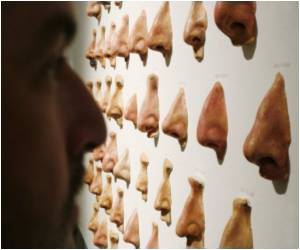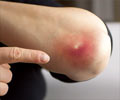
"These bacteria have endowed themselves with weapons to not only anticipate every immune defense, but turn these immune defenses against the host as well," said Olaf Schneewind, MD, PhD, professor and chair of the Department of Microbiology at the University of Chicago and senior author of the paper.
One of the first lines of defense in the human immune response are neutrophils, a type of white blood cell that ensnares invaders in neutrophil extracellular traps (NETs), a web-like structure of DNA and proteins. Captured bacteria are then destroyed by amoeba-like white blood cells known as macrophages. However, S. aureus infection sites are often marked by an absence of macrophages, indicating the bacteria somehow defend themselves against the immune system.
To reveal how these bacteria circumvent the human immune response, Schneewind and his team screened a series of S. aureus possessing mutations that shut down genes thought to play a role in infection. They looked to see how these mutated bacteria behaved in live tissue, and identified two strains that were unable to avoid macrophage attack. When these mutations—to the staphylococcal nuclease (nuc) and adenosine synthase A (adsA) genes respectively—were reversed, infection sites were free of macrophages again.
Looking for a mechanism of action, the researchers grew S. aureus in a laboratory dish alongside neutrophils and macrophages. The white blood cells were healthy in this environment and could clear bacteria. But the addition of a chemical to stimulate NET formation triggered macrophage death. Realizing that a toxic product was being generated by S. aureus in response to NETs, the team used high performance liquid chromatography and mass spectrometry techniques to isolate the molecule.
They discovered that S. aureus were converting NETs into 2'-deoxyadenosine (dAdo), a molecule which is toxic to macrophages. This effectively turned NETs into a weapon against the immune system.
Advertisement
S. aureus bacteria are found on the skin or in the respiratory tracts of colonized humans and commonly cause skin infections in the form of abscesses or boils. Normally not dangerous, severe issues arise when the bacteria enter the bloodstream, where they can cause diseases such as sepsis and meningitis. Antibiotic-resistant strains, such as methicillin-resistant S. aureus (MRSA), are difficult to treat and have plagued healthcare systems around the world.
Advertisement
"In theory you could build inhibitors of these bacterial enzymes or remove them," Schneewind said. "But these are untested waters and the pursuit of such goal requires a lot more study."
Source-Eurekalert












